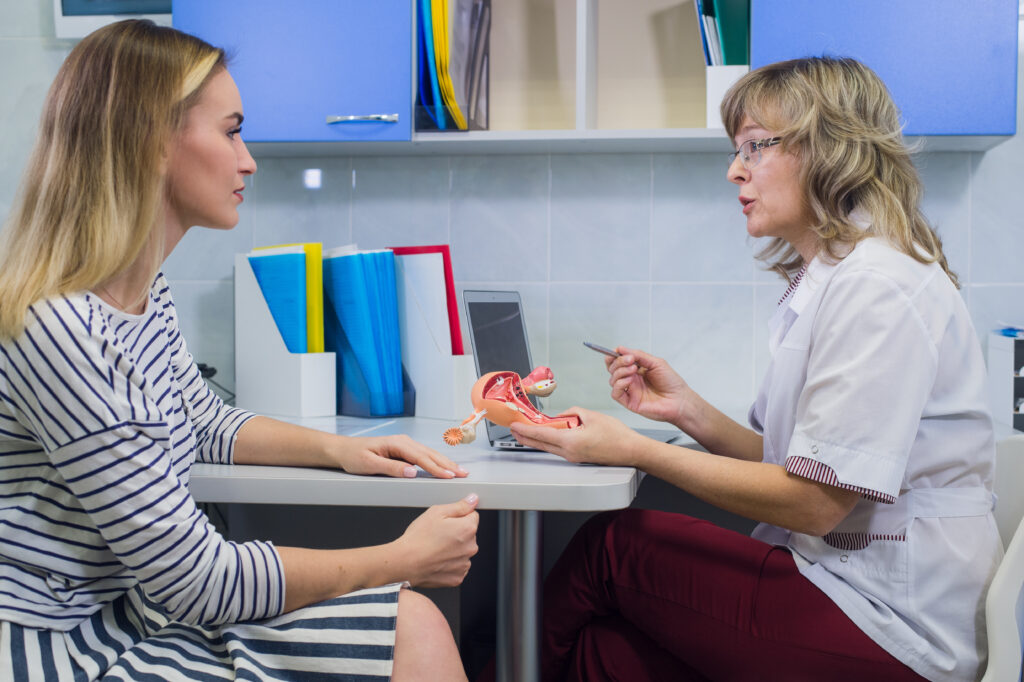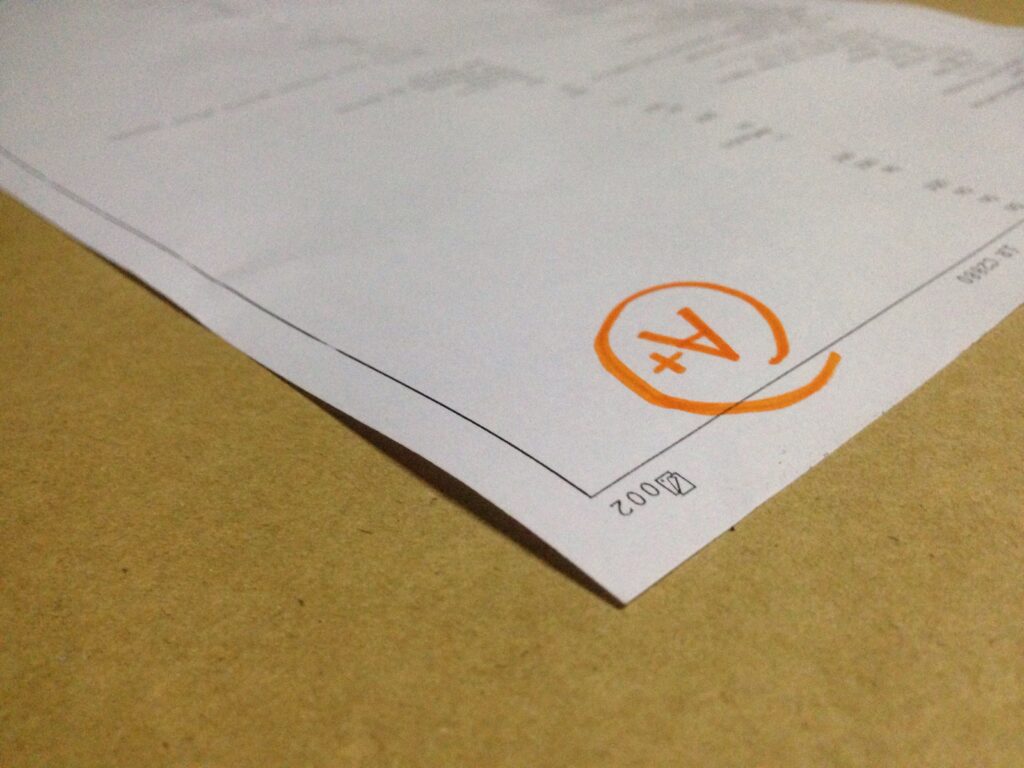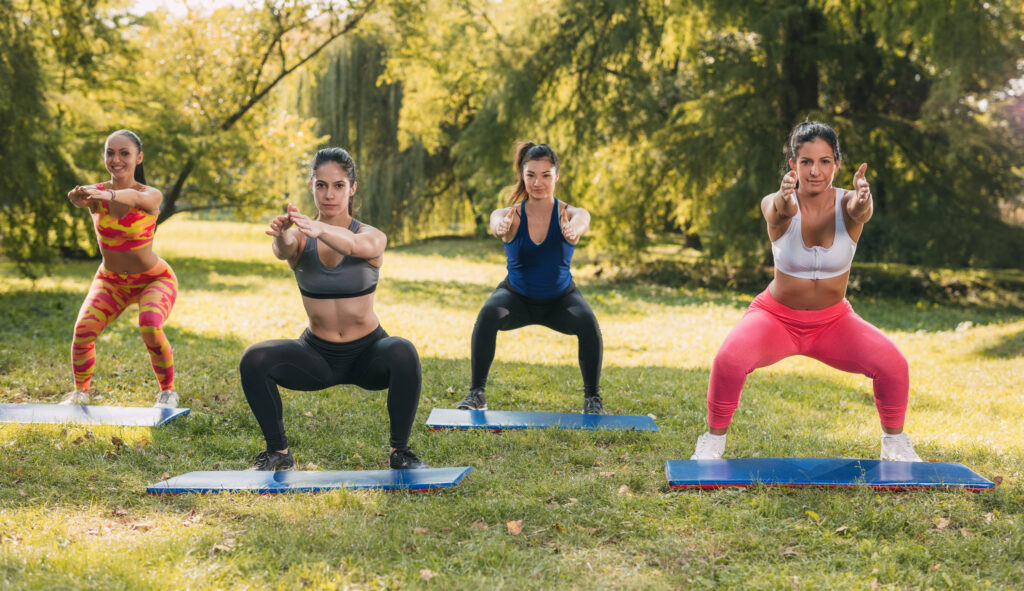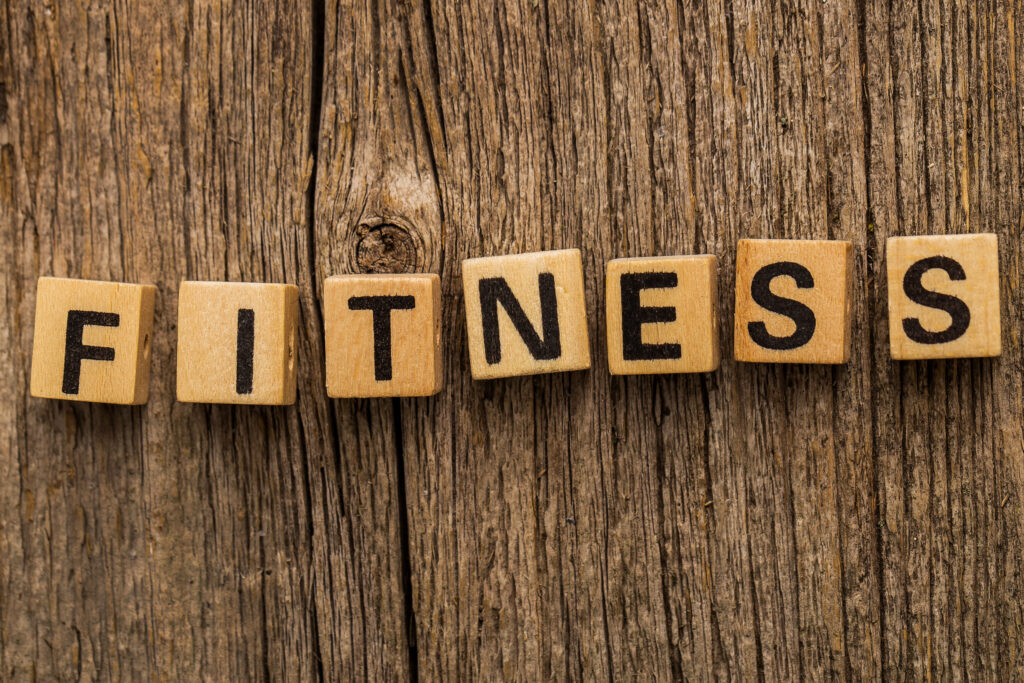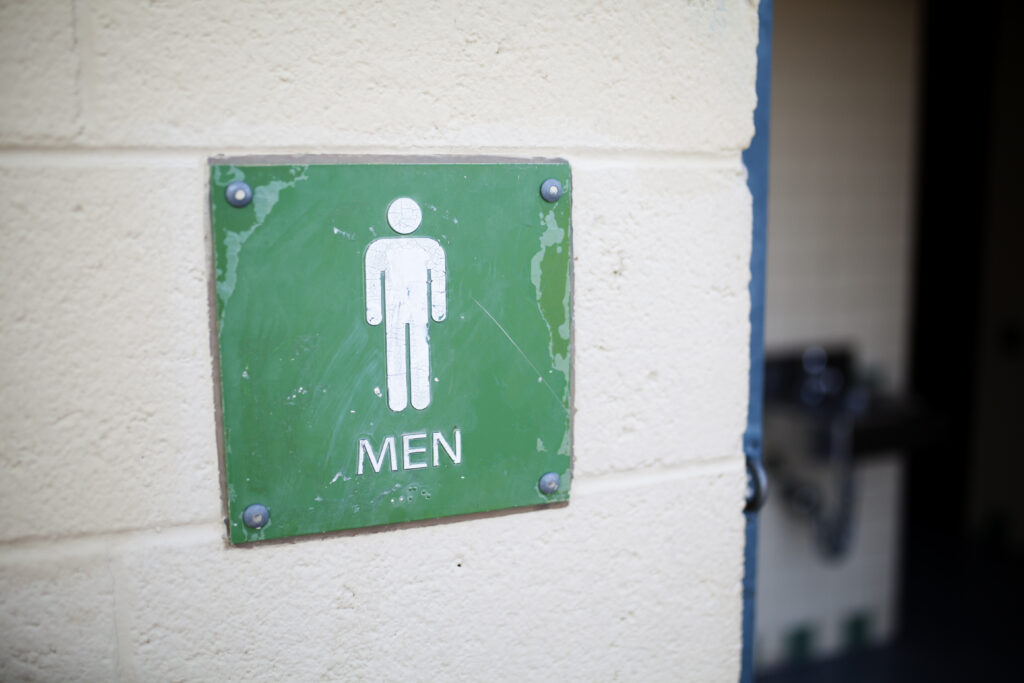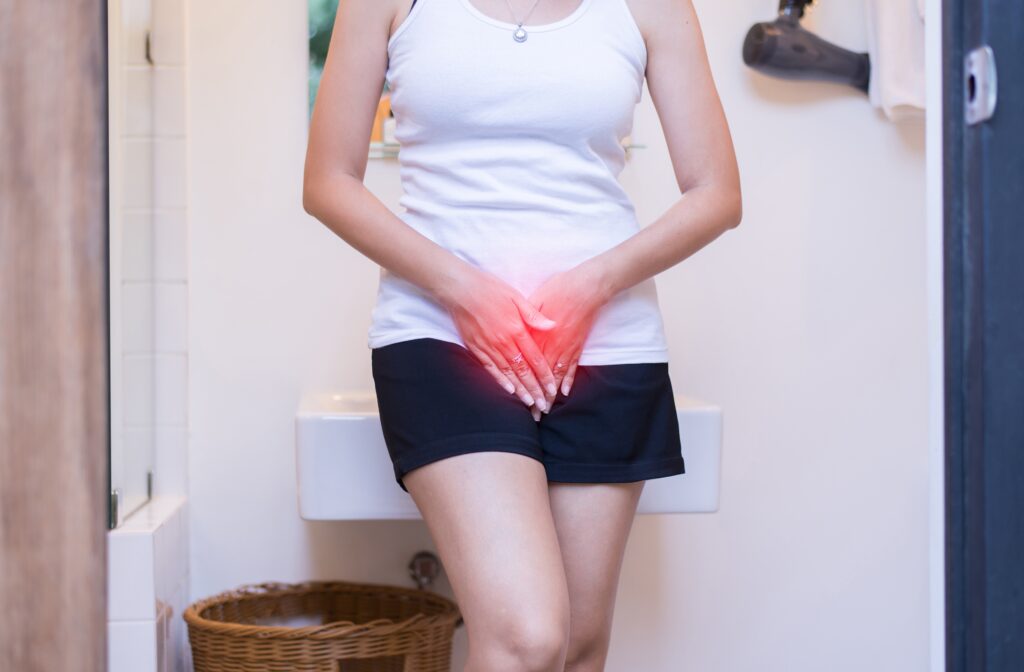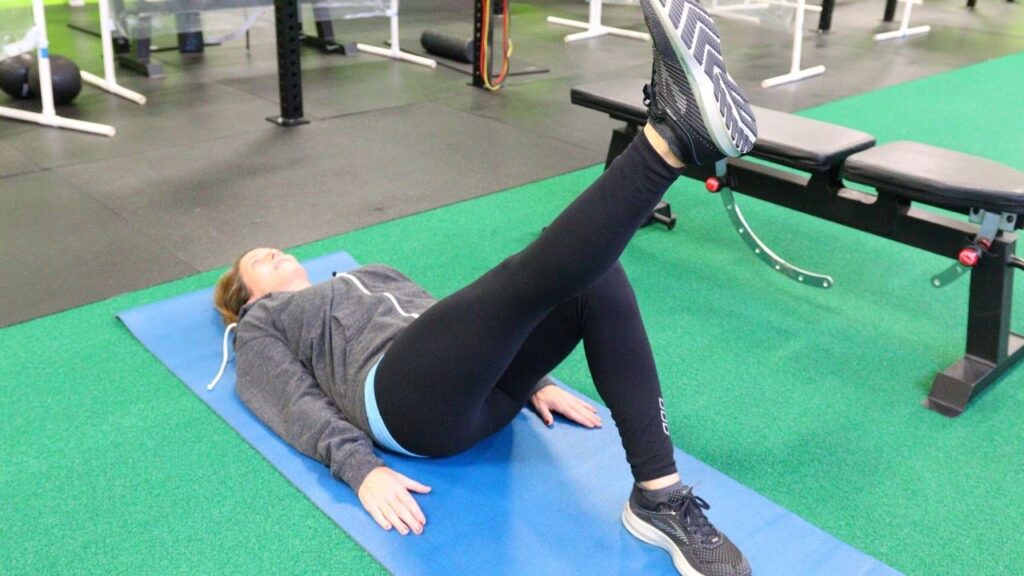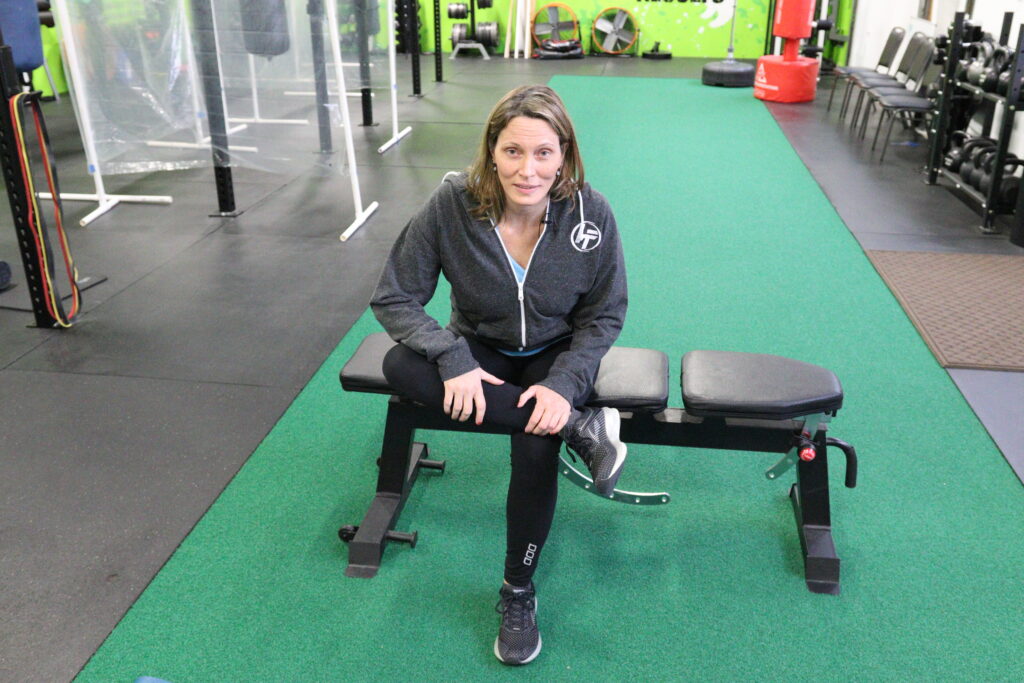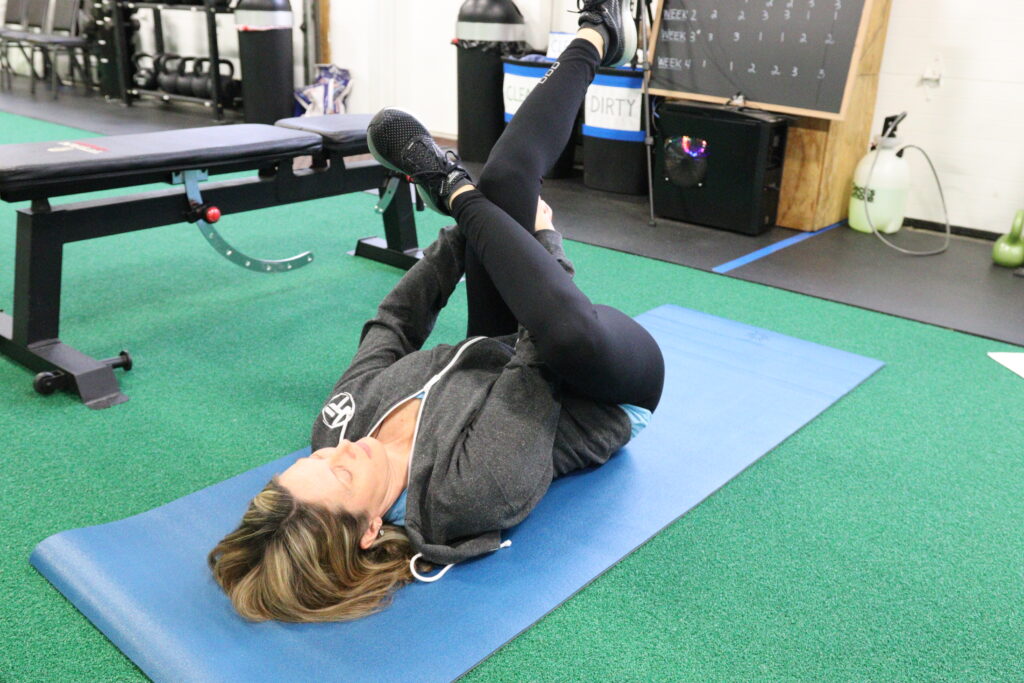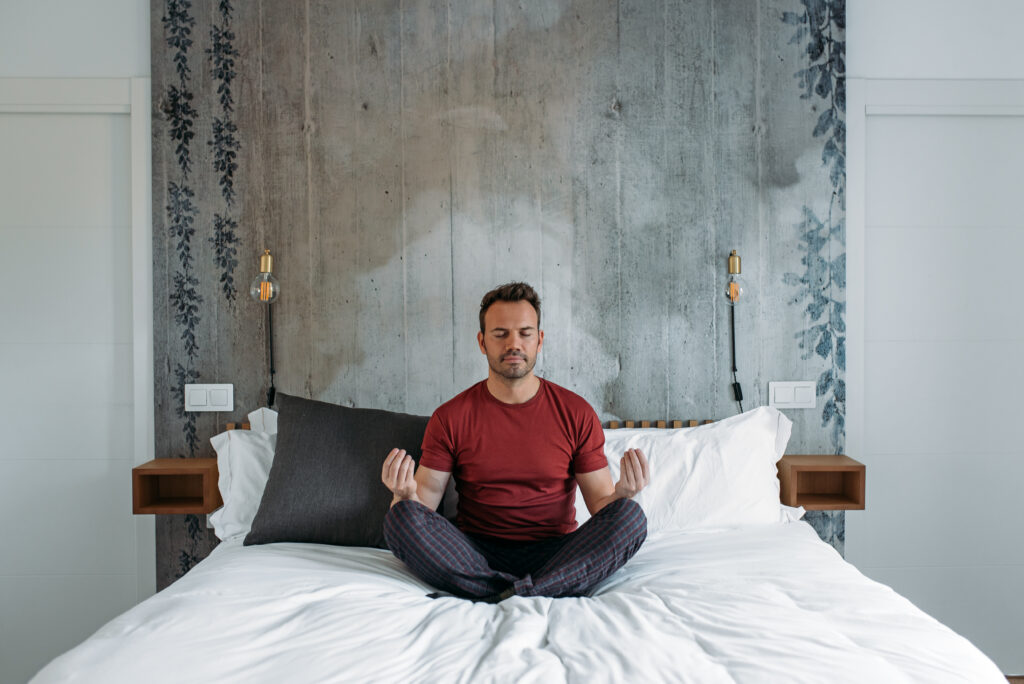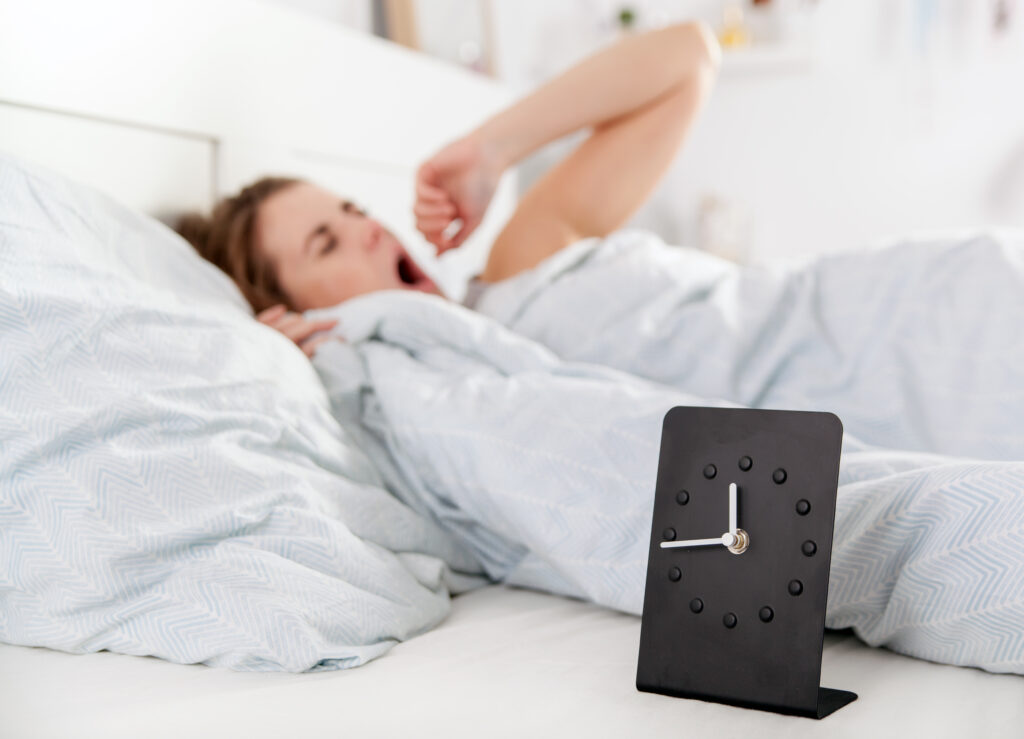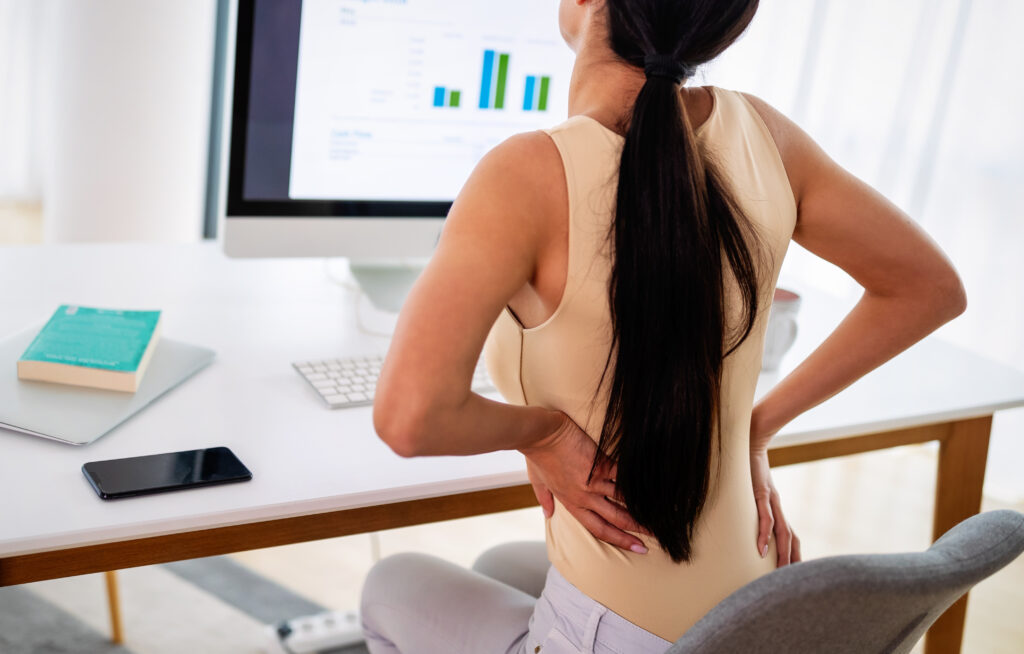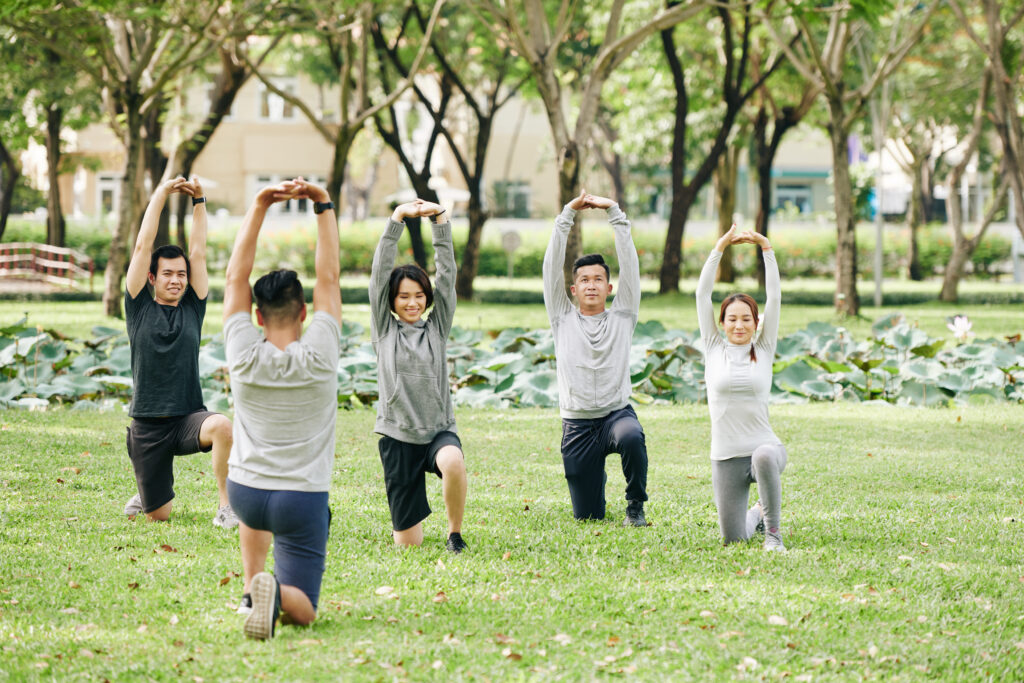August 2, 2021
Pelvic Floor Rehabilitation: The Nitty Gritty with Lee Ann Dinofrio, PT
Afraid to do jumping jacks at the gym?
Scared to sneeze or cough in public?
Always scouting for a restroom?
If having a weak pelvic floor is preventing you from having fun and getting the exercise your body needs, then this article is for you.
This interview with Lee Ann Dinofrio will clear up questions about pelvic floor dysfunction that you are too timid to ask.
Time to Share the Best Kept Secret in Midcoast Maine
Lee Ann Dinofrio is a physical therapist at Pen Bay Medical Center in Rockport, Maine. She specializes in pelvic floor rehabilitation.
Lee Ann is known as the best kept secret in Midcoast Maine because most people do not know that there is this kind of valuable help available for those suffering with pelvic floor dysfunction.
First, your pelvic floor is often referred to as the bowl or sling that holds the bladder, vaginal cavity, uterus (women), prostate (men), and rectum, which is the end of the large intestine that stores feces.
Lee Ann explained that pelvic floor rehabilitation is a treatment plan to strengthen the three layers of pelvic floor muscles to address issues such as, urine and fecal leakage, pelvic pain and postpartum issues.
Yes, you read that correctly. There are not one, not two, but three layers of muscle that make up your pelvic floor whether you are female or male. That anatomy is the same.
All three layers need to be strong for easy daily function to prevent embarrassing, inconvenient and possibly even painful incidents.
Disclaimer: If you feel you are in need of pelvic floor rehabilitation, please seek professional advice before following the information provided here to address your particular issues.
Visits with a Pelvic Floor Therapist
The first step to rehabilitation is evaluation. The evaluation visit is about 90 minutes and is an intimate procedure to assess the pelvic floor issue.
We say intimate because the only way to assess pelvic floor issues is vaginally or rectally.
Visits following the evaluations are about 45 minutes once per week for approximately 6 weeks. If more time is needed, then a patient’s health insurance is contacted for an extension.
Be ready for some homework
For progress to occur patients need to do their homework. Maybe you thought you were done with school, but now you are given what may be the most important homework ever to help you function easily in daily life.
Fortunately, this homework is very different than the high school algebra you speculated never using in “real” life.
This homework will help you EVERY day and involves exercises to strengthen, or even relax in some cases, the muscles of your pelvic floor.
Contracting these muscles with specific exercises for your pelvic floor are essential for addressing pelvic floor dysfunction. It works just like if you perform bicep curls to strengthen the bicep muscles of your arms only it’s muscles you cannot see.
Pulling the Drawstring
You may have already guessed that Kegels are the go-to exercise for pelvic floor strengthening and you’d be right for most cases.
Think of it as using your pelvic floor muscles to pull up and in as if lifting a drawstring bag in your abdomen.
What’s marvelous about Kegels is that you can do them anywhere at any time because nobody can tell if you are doing them. The muscles are internal. Nobody notices.
There are many variations to contracting your pelvic floor muscles.
1) Your therapist may suggest doing what is known as quick flicks, which are contracting your pelvic floor muscles quickly and letting them relax without holding them contracted.
2) Another option is to contract the muscles and hold for a few to several seconds before relaxing.
An A+ pelvic floor student
Lee Ann and other pelvic floor therapists prescribe exercises that benefit each patient depending on their specific needs.
To get on the honor roll with your therapist and benefit yourself the most, it’s imperative that you perform your therapist’s prescribed exercises correctly and consistently.
For Lee Ann’s recommendations for exercises fill out the form below!
No Squatting Allowed?
Some exercises may have to be put on the back burner for a while. Your therapist may suggest being careful with squatting because your pelvic floor muscles relax when performing a squat.
You may be thinking, “How am I going to build my quads and lift anything if I’m not supposed to squat?”.
Well, to be more precise, if you can contract your pelvic floor by performing a Kegel while simultaneously squatting, then you may be good to go.
Until then, working on strengthening the pelvic floor muscles needs to happen before squatting in the gym. In lieu of squats, consider wall sits and glute bridges.
Check out how to do proper glute bridges in our free guide (just fill out the form at THIS LINK to gain Instant Access)
Why do you have a weak pelvic floor?
You can experience a weak pelvic floor for a multitude of reasons.
Is it in your genes?
There isn’t significant research to support that having a weak pelvic floor is genetic. However, Lee Ann has seen in the history of her patients that there does seem to be a connection, such as a daughter, sister, mother, aunt, grandmother, etc. who all have suffered in some way from weak pelvic floor muscles.
Have you housed a human?
Pregnancy certainly can take its toll on pelvic floor muscles while carrying a child and whatever happens during the birth, either vaginally or cesarian section.
Muscles that are torn, cut or damaged in some way can mean that those muscles are not as strong as they were prior to pregnancy.
Retired muscles?
Our age may be another factor contributing to a weak pelvic floor. As we age our muscles get weaker due to wear and tear and overwork.
How is your fitness level?
Similar to all other muscles in our bodies, muscles that we do not use and do not continue to strengthen get weak and cannot perform their responsibilities appropriately.
Sufficient exercise each day is important for the muscles of your pelvic floor and your overall health.
What can I do to prevent weak pelvic floor muscles?
Exercise can make a significant difference in how well your pelvic floor muscles perform. The phrase “use it or lose it” comes to mind. If you do not exercise the muscles in your body, including your pelvic floor muscles, then the strength of those muscles can decline over time.
An option for preventing severe issues as a result of a weak pelvic floor is to seek out a therapist before the situation interrupts your daily living activities. Maintenance and consistency are key to keeping the pelvic floor strong.
I want results today!
Once patients take the leap and initiate a visit with Lee Ann, they tend to want results on the first visit. However, pelvic floor issues take time and dedication to remedy.
That said, most patients feel better emotionally and mentally after the first visit because they now know what the issue is and that there are steps to follow to strengthen their pelvic floor.
Many patients haven’t confided in anyone about how they are suffering in their daily lives with their weak pelvic floor. Once in Lee Ann’s office, the flood gates open through sharing their experiences and asking a plethora of questions.
Do not be nervous to ask any question of your therapist. It’s best to throw it all on the table, so to speak.
Yes, but I’m a man…
We associate weak pelvic floor conditions with women, but, as mentioned above, all the pelvic floor muscles are the same for both women and men.
For the most part, men seek Lee Ann’s help for incontinence and issues that may be related to their prostate.
Again, Lee Ann and other pelvic floor therapists have heard it all. They can provide the answers you seek or refer you to a specialist in another area that can help.
It Depends
Clothing and other products to help with weak pelvic floor issues are not necessarily helpful. Let me explain.
Lee Ann revealed that even though there are items that work very well and provide an element of confidence for going out in public, they may not instill the urgency necessary to remedy the underlying concern of weak pelvic floors in a timely manner.
Some folks tend to rely on these products, such as incontinence pads and underwear, and this can decrease the incentive to do their homework to improve the primary problem.
Understandably, you need to function in public life with confidence. It depends on how much you rely on using these products.
Going under the knife
There are scenarios when Lee Ann recommends a consultation with a surgeon.
However, before seeking out a surgeon to address your weak pelvic floor, please see a pelvic floor therapist. Take their advice to heart and give their recommendations your best effort.
In Summary
If you have any issues related to your pelvic floor that affect your daily living…
1) Please see Lee Ann Dinofrio at Pen Bay Medical Center or a therapist near you that specializes in pelvic floor rehabilitation. It can change your life for the better!
2) Do your pelvic floor homework EVERY day
3) Eat a balanced diet with fiber, exercise, attain adequate sleep and enjoy life
There is hope and help to address pelvic floor dysfunctions. You do not have to constantly worry about embarrassing situations, finding a restroom in public or jumping jacks at the gym.
Lee Ann Dinofrio currently practices at Pen Bay Medical Center in Rockport, Maine and has over 36 years of experience as a physical therapist. She received her training to specialize in pelvic floor therapy at the Herman & Wallace Pelvic Rehabilitation Institute and has been practicing pelvic floor rehabilitation since 2014.
She addresses urinary and bowel issues, pelvic pain and postpartum pelvic issues. Lee Ann helps women AND men and includes any necessary orthopedic steps in her treatment plans, as well.
Lee Ann is also certified in Integrative Dry Needling and finds this to be a very useful tool in the treatment of pelvic floor dysfunctions. (please note, no “private parts” are needled!).
To see Lee Ann, all patients need to be referred by their primary care physician, certified nurse practitioner or certified midwife.

Cathy grew up in NH surrounded by a large, loving family, where she learned generosity and hard work. She now models that for her two children. She was inspired to become a fitness coach when searching for ways to become more healthy herself after a life-threatening illness.
March 3, 2021
Easy Tips To Help Low-Back Pain
(From the Comfort of Your Own Home)
Are you in search of more easy tips to help low-back pain? Your requests for MORE tips prompted the creation of this article. And here at Hybrid Fitness, we give the people what they want!
Not only are we going to provide you with suggestions that will help alleviate low-back pain that are within your control, we’re also going to dive into the risk factors of low-back pain. Warm up those heating pads, here’s Part II!
DISCLAIMER: Before following any of these easy tips to help low-back pain, please refer out to a doctor or other medical professional.
When is Your Low-Back Pain Just Too Much to Address with Easy Tips at Home?
It’s probably time to seek the advice of a medical professional if you have:
- Low-back pain that comes on sharp and quick
- Pain that does not diminish within 6 weeks by performing strengthening and stretching exercises consistently
- Pain that flows down one or both legs
- Other symptoms that need medical attention that may be related to your low-back pain, such as if you have a fever accompanying back-pain that may indicate an infection of some kind in your body
- Experienced serious trauma from a fall or another kind of accident
- Any numbness or tingling
- Bouts with incontinence
- Pain at night that wakes you up from sleep
- Limbs not functioning properly
- Unexplained weight loss
- That feeling you get deep down in your center when your body tells you it’s trying to deal with something serious that needs professional medical attention.
What is Within My Control in Regards to Alleviating Low-Back Pain?
Your chance of having low-back pain at some point in your life is based on the following risk factors:
- Age – our strength and flexibility wanes as we get older
- Stress – our bodies physically hold stress, and give us signs that it needs to be addressed through pain
- Fitness level – as the saying goes, “use it or lose it”, a sedentary lifestyle is not your friend!
- Prolonged poor posture
- Disease, such as arthritis or cancer
- Pregnancy – carrying another human inside your body is nothing short of a miracle in more ways than one!
- Parenting – lugging not only young children, but all that goes along with them, can take its toll on your low-back
- Weight gain – it’s a big ask of your spine and hips to carry more weight than is healthy for your body frame
- Genetics – thank mom and dad for this one!
- Occupational risk factors – work demands, including heavy lifting and repetitive motion
- Smoking – People who smoke have more back pain as compared to those who do not smoke ~ maybe it’s from coughing?
- People who experience depression, anxiety, or other psychological conditions tend to have more back pain than those without these conditions
Obviously, some of these things listed are out of your control (genetics), but others you have the power to address in order to eradicate pain and discomfort in your low-back.
Here’s a few ways to alleviate that low back pain before even getting out of bed in the morning.
Remember ~ if any exercise increases your pain, dial back the exercise or stop entirely. Preferably, you want to challenge your body in a pain-free way to right itself.
Easy Tip #1 From the Comfort of Your Own Bed
The “not-so-high” leg lift – To engage the abdominals for support of the low-back
- Lying on your back, bend one leg so the sole of the foot is on the bed
- Keep the other leg extended and muscles engaged
- Engage your abdominal muscles (Think laughing, or tensing up as if somebody is going to punch you in the stomach)
- Keep your back on the bed (no arching)
- Gently and slowly lift and lower the extended leg no higher than the knee of the bent leg
- Start with a few repetitions, and increase to 15
- Repeat with the other leg
If you can easily perform the above exercise, then try the next one. If not, stick with the one above, and check out the previous Hybrid Fitness article including easy tips to help low-back pain here – How To Improve Low-Back Pain
Heels to the Heavens – To stretch the hamstrings and calves on the back side of your leg
- Lying on your back, fully extend your legs
- Lift one leg toward the ceiling, while supporting with hands (other leg can be straight or bent with the sole of the foot on the bed)
- Try to pull the toes down toward your body
- Push through the heels toward the ceiling
- For more flexible folks, you can either lift both legs together, or
- Using both hands on one leg at a time, slightly pull the leg toward the face
- Keep your back on the bed (again, no arching)
Keeping the Hip Flexors “Hip” – To decrease the pull on your pelvis in the front of your body
- Lying on your back on the edge of your bed
- Slide one leg off the edge so the lower leg and foot hang down
- Lift your other knee toward your chest and hold
- Start holding for even 10 seconds and ideally increasing up to 30 seconds based on your comfort level
- Repeat on the other side
Be patient with your body as you get up and move about your day. Here are a few more exercises to stretch a tiny but mighty muscle.
Easy Tip #2 – Priming Your Piriformis – The petite muscle that covers your sciatic nerve
The Figure 4 Stretch
This the most versatile and effective stretch for your piriformis, because there are 3 ways to perform the stretch depending on what works for your body.
Sitting
- Sit near the edge of your chair/bed/couch with a straight back
- Legs hip width apart and feet on the floor
- Cross one ankle over the opposite knee
- Be sure to have your shin aligned under your knee of the leg that is touching the floor
- Slowly lean forward slightly with a straight back toward your crossed leg
- Feel the stretch along the side of your crossed leg and in your hips and buttocks
- Hold for 30 seconds, rescind if painful
- Repeat on the other side
Lying
- Lay on your back on a mat or floor
- Bend one knee with the sole of the foot on the floor
- Bend the other knee and place ankle on top of opposite knee
- Gently grasp both hands behind the knee of the bottom leg
- Using arms lift the bottom leg towards your chest
- Feel the stretch in your glute of the top leg
- Hold for 30 seconds, rescind if painful
- Repeat on the other side
Standing
- Stand where you can hold onto something
- Place one ankle above the knee of the opposite leg
- Brace yourself on something with your hands for balance
- Try to keep your back straight and your chest upright while slowly lowering toward the floor by bending the grounded leg
- Bend down until you feel the stretch in the side of the leg and glute of the top leg
With any of these exercises make sure you are breathing. That’s right. Do NOT hold your breath. Your body needs fresh oxygen to move. Instead, start with an inhale and as you exhale try to increase the stretch.
Following one of these Figure 4 stretches can help stretch the piriformis so it doesn’t aggravate the sciatic nerve, and cause pain in your low back or down your legs.
Another option is to get a deep muscle massage from a qualified professional to help muscles release tension.
Easy Tip #3 – Breathe!
Yes, breathe to relax your body, including the tense muscles that may be contributing to your low-back pain. Believe it or not, a lot of us do not breathe fully, especially when stress is present. If we are not mindful of our breathing we tend to hold our breath or take shallow breaths.
To release stress, relax muscles and cleanse your body with essential oxygen you can:
- Focus on taking slow, deep breaths for a few minutes a few times per day wherever you are in those moments; the car, washing dishes, folding laundry, raking leaves, etc.
- Use a square breathing technique where you inhale to the count of 4 (or whatever # works for you), hold for a count of 4, exhale to the count of 4, hold for a count of 4 and repeat for a few minutes.
- Breathe from your diaphragm by placing your hand on your abdomen and taking slow, deep inhales focusing on your abdomen expanding followed by a longer exhale. This stimulates your parasympathetic nervous system to calm your body and reduce your heart rate and blood pressure.
- Meditate while focusing only on your breath. Be mindful of the oxygen entering your body and the carbon dioxide leaving your body. Closing your eyes can help you keep focus on your breath.
Commit to Relieve Your Low-back Pain
Physical therapists hear some of their patients say that they are not getting better by doing the exercises prescribed only to find out they weren’t really doing those exercises enough at home to make progress.
To recap, for a pain-free low-back keep these guidelines in mind:
- Do your exercises! Faithfully everyday, even more than once a day if prescribed by a medical professional.
- Whatever exercise you do for one side of your body make sure to do the same for the other side of your body. Don’t just lift one leg, unless there is a medical reason for doing so.
- Don’t sabotage your efforts with poor posture. Make sure your work space is ergonomically correct. View the Hybrid Fitness Posture article for tips – Good Posture is Your Partner For Mobility.
- Breathe! Handle your stress and get your lymph system flowing to cleanse your system. You can do that just by breathing properly and you will feel better. Lymph fluid that is stagnant is not your friend.
- Be social! Why? Because humans are social creatures and connecting with others makes us smile and increases our chances to see the bright side of any situation.
- Keep Going! Healing, recovery and realignment of your low-back takes time (weeks, months, and even years!). Be patient with yourself. Your body is doing the best it can with what it has to work with to relieve your low-back pain.
It’s Time
Now that you have all of the tools you need, it’s time to put them to work! Take 1 or 2 of these easy tips to help low-back pain, and implement them on a consistent basis! Once you’ve done that, you should start seeing progress, and can trickle in additional tips over time!
If you’re looking for more easy tips to help low-back pain, check out one of our most popular YouTube videos here.
If you found this helpful, please consider subscribing to the Hybrid Fitness YouTube channel, and be sure to check out all the other articles from our coaches.
And remember…Small Steps, Big Results.

Cathy grew up in NH surrounded by a large, loving family, where she learned generosity and hard work. She now models that for her two children. She was inspired to become a fitness coach when searching for ways to become more healthy herself after a life-threatening illness.
March 2, 2021
How To Stay Active With A Desk Job
The Covid pandemic has impacted everyone, including myself. Since November of 2020 I have been working remotely from home. Some will say “that’s great!”. However, with working from home comes long hours of sitting at a desk and being indoors. Sure, I’ll get up from the desk every now and then, but definitely not as much as I did when I went to the office. Finally, I decided that enough was enough, and I needed to find ways to stay active with a desk job.
So, if you’re working remotely like me, or if you are in an office all day, these 4 tips are for you. Make sure and read until the end! The last tip is one of the most important, and should be implemented inside and outside of the office!
Put It In Motion
When we sit for long periods of time it can cause tightness in the hips, back pain, and a general feeling of tiredness from being in the same position.
The tips below will give you more energy, increased productivity, and better concentration. They are super simple to follow, and are guaranteed to make you feel more active throughout your work day.
Without further ado, let’s MOVE on to the tips! (see what I did there?)
Tip # 1: Move On The Hour
Take a walk to the water cooler or the break room, grab some coffee or a snack. Go over and talk to your coworker in the next cubicle or office. Wherever you choose to go, be sure to do it every hour.
Set a timer on your phone as a reminder to get up from your chair and away from your desk for even 5 minutes. You will come back refreshed and ready to keep working.
When we move our bodies, it helps to get our circulation going, increases our heart rate, and stretches out our muscles.
When we sit for long periods of time our bodies will feel it! Being too sedentary can come with aches and pains, feelings of fatigue, and it can even pose a risk of blood clots.
So, make moving throughout the day a priority for yourself and stick to it by doing the following:
- Make movement a daily habit
- Set a timer for every hour
- Commit to staying active
Tip # 2: Do Chair Exercises & Stretches
Although you’re in a chair and at a desk all day, there are still exercises and stretches that you can do that are not only beneficial, but simple, and don’t take a lot of time. This is a great way to get your heart rate up, and to stretch out your legs and hips!
Chair Marches
- Bring one knee slowly towards chest
- Slowly lower leg back down
- Repeat with the other side
- Complete 20-30 times total
Elevated Push-ups
- Place your hands on a chair or desk and get into a high plank position
- Don’t let your hips sag
- Lower body by bending at the elbows and bring chest to desk
Standing Toe Touch
- Take a deep breath in while you bring your arms straight overhead
- Exhale and slowly try to touch your toes while keeping your legs straight
- Repeat 10-15 times
Correct Posture
- Sit with a straight back, shoulders down
- Feet flat on the floor
- Knees at a ninety degree angle
For more on posture, check out coach Cathy’s article here – Why Good Posture is Your Friend For Mobility
Tip # 3: Walk During Your Lunch Break
Get outside and soak up some vitamin D! Bring a coworker with you for some company. 15 minutes of brisk walking a day will help you stay alert and focused for the remainder of the work day.
Studies have shown that walking during a lunch break can boost concentration, productivity, and happiness. So go ahead and get outside! You won’t regret it.
Vitamin D is so beneficial, and can help promote better mood, helps to regulate the absorption of calcium, and assists with reducing the risks of heart disease.
Getting outside during your lunch break will help break up the monotony of the work day, as well. You will return to your desk refreshed and renewed!
Speaking of walking, let’s talk about my next tip for staying active with a desk job.
Tip # 4: Take The Long Way
When you get to work, park in the furthest spot from the building.. This will help you get those steps in before you get to work, and once the work day is done. It’s an easy way to burn extra calories, and can really add up! You can burn an extra 10 calories every time you walk from your car to the office.
Another way to add in steps throughout the work day, is to use the bathroom that is furthest away from your desk. Think of how many times you use the restroom in a day!
In fact, anytime you get up from your desk, whether it’s to go to the printer, get supplies, or going to a meeting, take the long way. If there are stairs in your office, even better. Keep on moving and keep on adding steps.
There you have it, four tools to throw in your toolbox to help you stay active with a desk job. Implementing these will make all the difference! To recap: :
- Move away from your desk frequently
- Do some exercises and stretching at different times of the day
- Get outside during your lunch break for some sun and fresh air
- Take the long way, and easily burn some extra calories.
Following these tips will help you to experience increased mental clarity and more energy, while decreasing feelings of fatigue. Who knows, maybe your work day will go by a lot quicker!
And remember…
Small Steps, Big Results!
If you enjoyed this article, swing over to our YouTube channel to check out our latest videos here – Hybrid Fitness YouTube Channel
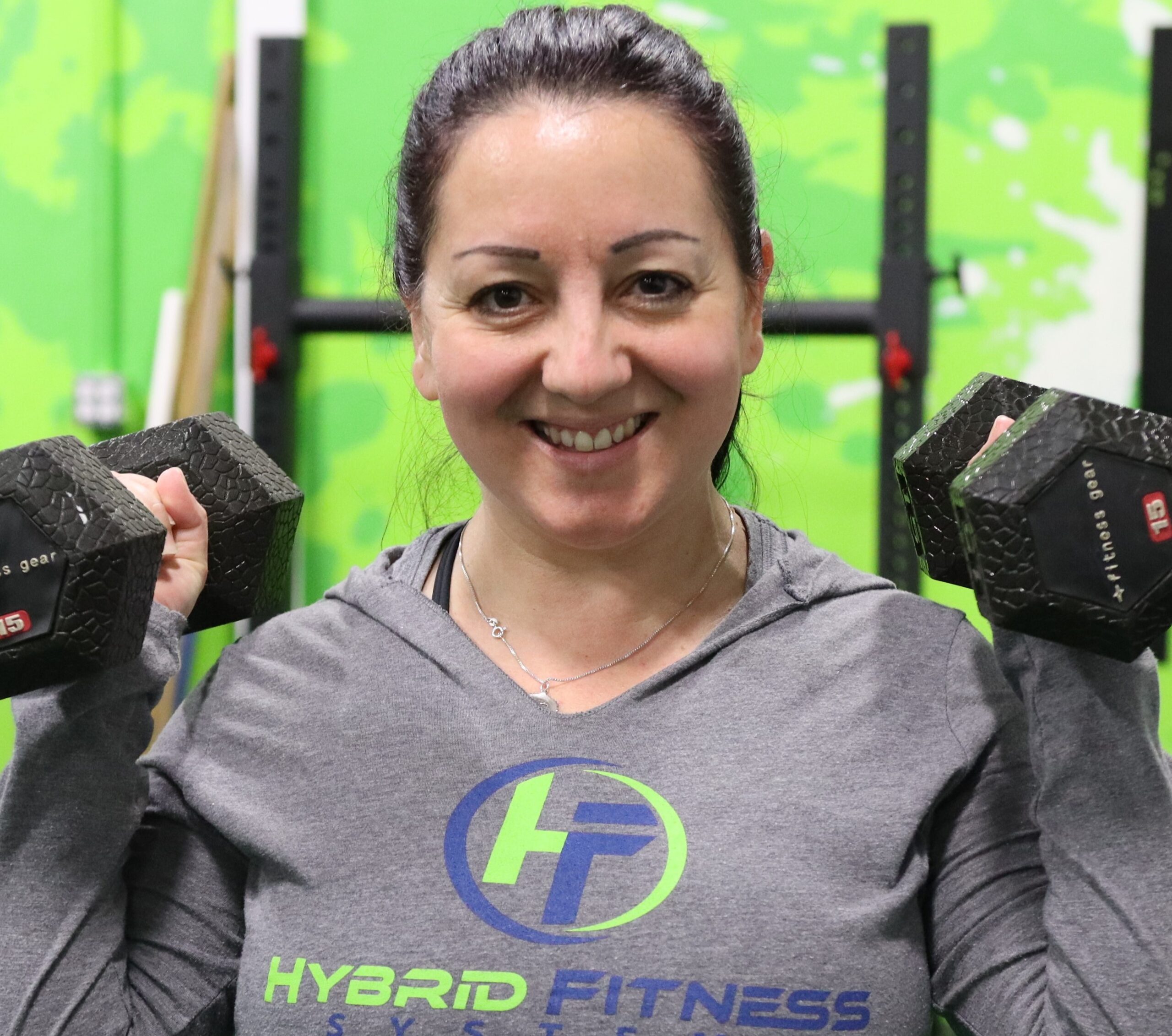
Danielle lives in mid-coast Maine after growing up in Boston, MA. She’s a nursing school graduate, and is currently working towards becoming a certified grief counselor. She also has her personal training certification through ASFA.
Danielle has run multiple half marathons, and has even completed 2 full marathons, including the Boston and Des Moines marathons.
Danielle loves to create a comfortable, fun, and relaxed environment in the gym, and is dedicated to making a positive impact on others, and helping people feel good about themselves while reaching their goals.
February 9, 2021
Ways To Improve Sleep
Do you wake up feeling sluggish and tired? Not getting the recommended 7-9 hours of sleep/night? And what about “monkey brain”? That endless racing of the mind that begins right when you want to fall asleep?
If you are like so many others, and cannot get to sleep, or have trouble sleeping through the night, then this article is for you. Read to the end as I share my 5 tips on ways to improve sleep.
Sleep is so important to us as humans. It is essential to our existence, and has many benefits. When we get adequate sleep we feel refreshed, focused, and energized. Our concentration is improved, we feel great!
But on the contrary, when sleep is compromised, we feel pretty bad overall; sluggish, non productive, headaches, and nausea. Just to name a few.
The long term effects of inadequate sleep include high blood pressure, depression, diabetes, weakened immunity, and anxiety. How do we combat these? Let’s dive into those 5 tips, and find out!
TIP # 1: Make your bedroom sleep friendly
Start by removing clutter. Having a clutter free space will help with undisturbed sleep. The room should be organized and comfortable.
You also want to keep the room as dark as possible. Streetlights, room lights, and even the illumination from an alarm clock can certainly compromise sleep. A couple of things you can do to really enhance the darkness is to get some blackout curtains, or even a fashionable eye mask.
Your bedroom should be for one thing, and one thing only…
Sleep!
In order to do that, you need to separate everything else from it. Make sure and remove any work materials from your bedroom. Don’t keep laptops, phones, or files in your sleeping quarters, especially since a lot of people are working remotely from home.
One of the best things you can do to make your bedroom more sleep friendly is by adding in a little aromatherapy. Use soothing scents like lavender to help you relax, and create a calming space.
TIP #2: Shut down electronics, and decrease screen time
Have you heard of blue light?
Blue light is used in electronic devices such as computer screens and cell phones. During daylight hours it can boost attention and focus.
However, it can affect and interrupt sleep patterns. In a nutshell, blue light is exactly what it sounds like; light on the blue wavelength. Great to keep us focused and help with mood but not so great for nighttime use.
Studies have shown that using electronic devices before bed can interfere with sleep by suppressing melatonin, which can then also reduce the amount of time we spend in REM; otherwise known as rapid eye movement which are the hours we spend dreaming, and in deep sleep. This is the most important part of sleep that helps us feel most rested.
One of the best ways to improve sleep is to eliminate as much blue light before bed as possible. That means shutting the tv off, putting away the laptop, and hanging up the phone about one hour prior to getting in bed. The National Sleep Foundation recommends stopping the use of electronic devices at least 30 minutes before bedtime.
If you’re unable to completely eliminate all sources of blue light at night, you could utilize blue light blocking glasses. It’s definitely not the same as shutting down the electronics, but it’s an improvement!
TIP #3: Use white noise
Have you ever tried sleeping in a room that was completely dead silent? It can be extremely difficult!
You know what they say, “silence is deafening”.
White noise is a great solution. Especially if you’re a light sleeper. It can even help to drown out noise that can be bothersome.
You can use a fan, or something as simple as a noise machine. Whether you like the sound of rain or ocean, a noise machine can be a huge help.
TIP #4: Get ready for bed earlier than usual
Try to stop answering emails, watching tv, or perusing through social media at least one hour before hitting the sack. Do your nighttime routine or chores earlier in the evening, that way it’s off your list of things to do.
Having a simple routine in the evening before bed will decrease stress and promote feelings of relaxation. Create a consistent routine and stick to it. Maybe a cup of chamomile tea and a good book. The simpler the routine is, the less there will be to stress about once in bed. Doing this will help you to unwind and put your mind at ease.
Which brings us to the next tip…
TIP #5: Meditate and breathe
Meditation and deep breathing can reduce anxiety, sharpen memory, and promote restful sleep.
Meditate for 10 minutes in a quiet space with eyes closed. Let thoughts come, acknowledge them, then simply let them go.
Take a nice deep breath in, hold for 1,2,3 and then let it out slowly. This will help to calm your mind, as well as your body.
Your thoughts will slow, and your body will start to relax. Focus on your breath by inhaling through the nose and exhaling through the nose. Let your thoughts come, acknowledge them, and simply let them go.
Meditation may be difficult at first, but I promise it will get better! There are many guided meditation apps to assist you on gaining better skills. I started using headspace a few years ago and it has really helped me with improving my meditation technique.
Don’t sleep on these tips!
There you have it! My 5 simple ways to improve sleep!
Let’s recap!
- Make your bedroom sleep friendly to make it your sanctuary.
- Shut down electronics, and decrease screen time to prevent blue light.
- Use white noise to lull you into dreamland; whether it’s a constant noise like a fan, or a machine that makes you feel like you’re in a rainforest.
- Get your chores out of the way, and get ready for bed earlier.
- Meditate and breathe.
Now that you obtain all of the tools you need in order to defeat your nemesis that is poor sleep, it’s time to put them to good use!
Start by just implementing one at a time, making it a routine, and slowly adding to it. You’ll be a professional sleeper in no time!
If you found this helpful, please consider subscribing to the Hybrid Fitness YouTube channel, and be sure to check out all the other articles from our coaches.
And remember…Small Steps, Big Results.

Danielle lives in mid-coast Maine after growing up in Boston, MA. She’s a nursing school graduate, and is currently working towards becoming a certified grief counselor. She also has her personal training certification through ASFA.
Danielle has run multiple half marathons, and has even completed 2 full marathons, including the Boston and Des Moines marathons.
Danielle loves to create a comfortable, fun, and relaxed environment in the gym, and is dedicated to making a positive impact on others, and helping people feel good about themselves while reaching their goals.
January 28, 2021
How To Improve Low-Back Pain
Let’s be honest, if you’ve got lower back pain, you’re probably missing out on a lot of fun in life. Fortunately, here are a few simple tricks you can do at home, without any equipment, to improve, and hopefully, eliminate your low-back pain.
DISCLAIMER: Before following any advice given here, please refer out to a doctor or other medical professional.
What Causes Low-Back Pain?
Aggravation of the low-back usually occurs due to improper alignment, or if our mobility has been disrupted. Usually misalignment is caused by a previous injury, or by improper repetitive movement over time. As many of you know, it takes only one vertebra to be out of alignment to experience pain.
Discomfort also occurs if two or more vertebrae are stuck together. Consider that each vertebra has 4 joints/facets that are held together with tiny ligaments. That’s 20 joints that can be sprained or fixated potentially leading to aches and pains!
3 Tips to Reduce or Eliminate Low-Back Pain
You can resolve low-back pain at home by taking the proper steps. First, you’ll want to reduce any inflammation, if possible. This is beneficial to remedy joints, nerves, and soft tissue that are irritated, raw, and swollen, causing discomfort and/or aggravation. In particular, your doctor or chiropractor may recommend oral anti-inflammatory medication, applying ice and/or stretching.
Here are 3 tips that you can do in the comfort of your own home to try and remedy that pesky low-back pain!
Tip #1 – Your Low-back Wake-up Call
How you start your morning contributes to the flow of the rest of your day. Your initial actions when you wake up prepare your body for sitting, standing and moving about your day.
Here’s an example of how to stretch your low-back before you even get out of bed each morning:
- Lying on your back with legs bent, gently pull one knee toward your chest
- Relax your low-back muscles while holding this position for 3-5 seconds, or longer if desired.
- Slowly switch legs.
- Now, do the same thing, but bring both knees toward your chest.
- Repeat 5-10 times to wiggle free from stiffness
Tip #2 – Your Core is Key to Resolve Low-back Pain
Strengthening your back is obviously important, but it’s just as important to strengthen your entire core. All the muscles extending from your head to your pelvis deep within your trunk provide support for your spine.
Exercises to aid with low-back pain are those that provide simple, low-impact movement of the whole body. The more you move, the more your lymph and circulatory systems flow. This increases the delivery of oxygen and nutrients to the joints keeping them healthy and removes waste products from your body.
Examples of Exercises for Mobility:
- Walking
- Swimming
- Biking
Specific Exercises for Building Core Strength:
- Pelvic tilts to create movement in the pelvis.
- Partial abdominal crunches lifting the head and shoulder blades off the mat.
- Crisscross, also referred to as Bicycles to strengthen the obliques
Give the core a hand by strengthening the glutes, quads and hamstrings with these exercises:
- Glute bridges to activate the glutes & hamstrings.
- Step-ups
- Walking lunges
- Single leg deadlift
- Elevated split squat
On the other hand, if lying on your back to exercise is not comfortable, then perhaps getting down on all fours for:
- Cat-cows
- Bird-dogs
- Planks, either low planks on your forearms or high planks with arms extended
Many exercises are beneficial and improve low-back pain but only if they are performed properly. Please be mindful when involved in the following to make sure your form is correct. If an exercise is too difficult to hold proper form, then modify the exercise appropriately.
Here are some exercises & behaviors you may want to be cautious of when dealing with low-back pain:
Planks
I know this may sound contradictory since I mentioned planks as a beneficial strengthening exercise above, however, ensure that you have proper plank form. To do this, align your body in a straight line from your head to your toes. If your low back sags or if you experience pain, try planks on your knees, elevated on a bench/chair or against a wall.
Prone positions
Although prone positions are beneficial for building core muscles, please use caution. Prone positions, such as Superman, can compress the spine by lifting your upper body and lower body too high off the floor. Instead, focus on making your body as long as possible by reaching with your fingertips and toes or lift only the upper body or lower body independently.
Excessive bending
Exercises that pull on the low-back such as, trying to pick something up off the floor without bending your knees. This movement can strain your low-back, especially if you cannot comfortably touch your toes with straight legs and/or if your hamstrings are tight. In other words, the low-back tries to provide the slack necessary to bend farther and could increase the chance of injury.
Quick twisting movements
Remind yourself to engage your core to support the low-back before slowly rotating the torso.
Contact or high-impact sports
Even though these sports may be fun, there is a risk of injury to your low-back if your core is weak. Low-impact exercises where there is always a grounded body part (whether it be a hand, foot or even a behind) can build muscle for more strenuous activities.
Heavy lifting that compresses the spine
Lifting heavy weight can increase the chance of low-back injury, even with proper precautions. In fact, it is possible to build muscle using body weight or light weight exercises.
Tip #3 – Strike a Pose to Relieve low-back pain
Posture! Posture! Posture!
Be mindful of your posture whether sitting, standing or lying down by:
- Engaging the core to support the low-back
- Aligning your head with your spine by lengthening through the back of the neck and pulling your chin back so your ears are over your shoulders
- Slightly pulling your shoulders back and shoulder blades together
- Using lumbar support when needed
Granted, nobody enjoys a moment of “Ouch! My back!”, as it impacts our enjoyment of life. Starting with the wake-up call exercise above and following through with these simple tips will help improve your low-back pain by keeping your joints mobile and your core strong.
For more on posture, check out this article!
If you found this article helpful, please consider sharing it with someone suffering from low-back pain.
Swing over to our YouTube channel to check out our latest videos here:
Hybrid Fitness YouTube Channel
And remember…small steps, big results.

Cathy grew up in NH surrounded by a large, loving family, where she learned generosity and hard work. She now models that for her two children. She was inspired to become a fitness coach when searching for ways to become more healthy herself after a life-threatening illness.
January 20, 2021
How to Fight Depression
5 Tips To Turn That Winter Blues Into Summer Smiles!
Have you felt down, depressed, or even isolated around having to social distance due to the Covid pandemic? If so, this article may be JUST what you need to help you take the steps needed to turn your mood around! Below, I’m sharing five simple tips on how to fight depression, kill the blues, and have you springing out of bed with an extra kick in your step!
What is Depression?
Depression is a state of low mood and aversion to activity which can affect a person’s thoughts, behavior, motivation, feelings, and/or sense of well being.
According to a study from Harvard Medical School in July 2013, 1 in 10 adults struggle with depression.
And, right now in our current state of affairs, between Covid bringing isolation to many of us, the holiday’s, time change, and seasonal change, who isn’t feeling a bit stressed out and down?
Let’s talk about some things you can implement into your daily lives to combat these feelings of stress and depression!
Tip #1 – Stay Active
Staying active will give you a huge boost in feeling better!
Take the dog for a walk, join an organization, start exercising! Having something to look forward to will help with feelings of sadness or depression.
When you exercise, your body releases brain chemicals such as:
- Dopamine
- Serotonin
- Norepinephrine
- BDNF
- Endorphins
All of which give you that “feel good” boost, or “runners high”, as some like to refer to it as.
There are so many ways to incorporate exercise into your routine, and it doesn’t have to be crazy intense!
- Walking
- Biking
- Weightlifting
- Yoga
- Swimming
- Playing sports
The list is endless!
And, as a result, your blood pressure may lower, and if you have diabetes, the long term effects may even be reduced!
Exercise becomes even more beneficial in a group setting, such as a gym. There is positive reinforcement, the support of others, a sense of belonging, and simply having fun while seeing positive results physically. Over time, friendships can develop and it begins to feel like a family.
Tip #2 – Get Outside Daily
Try and get outside every day!
Take a walk in the fresh air, and feel the sunshine on your face. Even in the winter, we can bundle up and take in the cold, crisp air. There’s nothing quite as invigorating as fresh air!
Around 42% of Americans are deficient in vitamin D, and studies have shown that low vitamin D levels may be correlated with depression. One of the best ways to increase your vitamin D levels? Natural sunlight!
Tip #3 – Do Something That Makes You Happy
Be sure to do things that you enjoy and make you happy!
- Read a book
- Have a cup of tea
- Do something for someone else
- Explore a new hobby
- Spend time with loved ones (virtually if necessary)
- Do something that is fulfilling or gives you purpose
- Volunteer your time
There are no right or wrong things here. Whatever makes you happy is where your focus should be, and we should always take pleasure in the things we enjoy!
Tip #4 – Laugh
Keep in mind to laugh, at yourself and others. Try not to take yourself too seriously! Laughter really is the best medicine!
- Watch a funny comedy movie or television show
- Listen to a funny podcast or stand-up
- Spend time with children – they’re always laughing!
- Play entertaining games with friends
Tip #5 – Keep a Journal
Journaling daily in the morning and/or at night is a great practice to get into. Especially if you’re feeling down or isolated.
Document these feelings! It’s a great way to get them out of your head, down on paper, and be able to reflect on them.
Don’t forget to write down any positive thoughts, as well! You can always look back on these as good memories. It may just spark the positive shift in mindset that you’re looking for!
In Conclusion
The effects of these tips on depression is a positive one, not a cure, but it can definitely help with your overall well being. By incorporating these things into your daily life, you should see positive results, and fast! Implement even just one of these this week, and I promise you’ll see improvements in mood, sleep, mindset, and motivation. Slowly build off of that, and you’ll be kissing the winter blues bye-bye for good!
If you found this article helpful, please consider sharing with family and friends that would benefit as well!
If you enjoyed this information, please check out our other fitness & health articles here:
https://hybridfitnessgym.com/articles/
Swing over to our YouTube channel to check out our latest videos here:
Hybrid Fitness YouTube Channel

Danielle lives in mid-coast Maine after growing up in Boston, MA. She’s a nursing school graduate, and is currently working towards becoming a certified grief counselor. She also has her personal training certification through ASFA.
Danielle has run multiple half marathons, and has even completed 2 full marathons, including the Boston and Des Moines marathons.
Danielle loves to create a comfortable, fun, and relaxed environment in the gym, and is dedicated to making a positive impact on others, and helping people feel good about themselves while reaching their goals.

